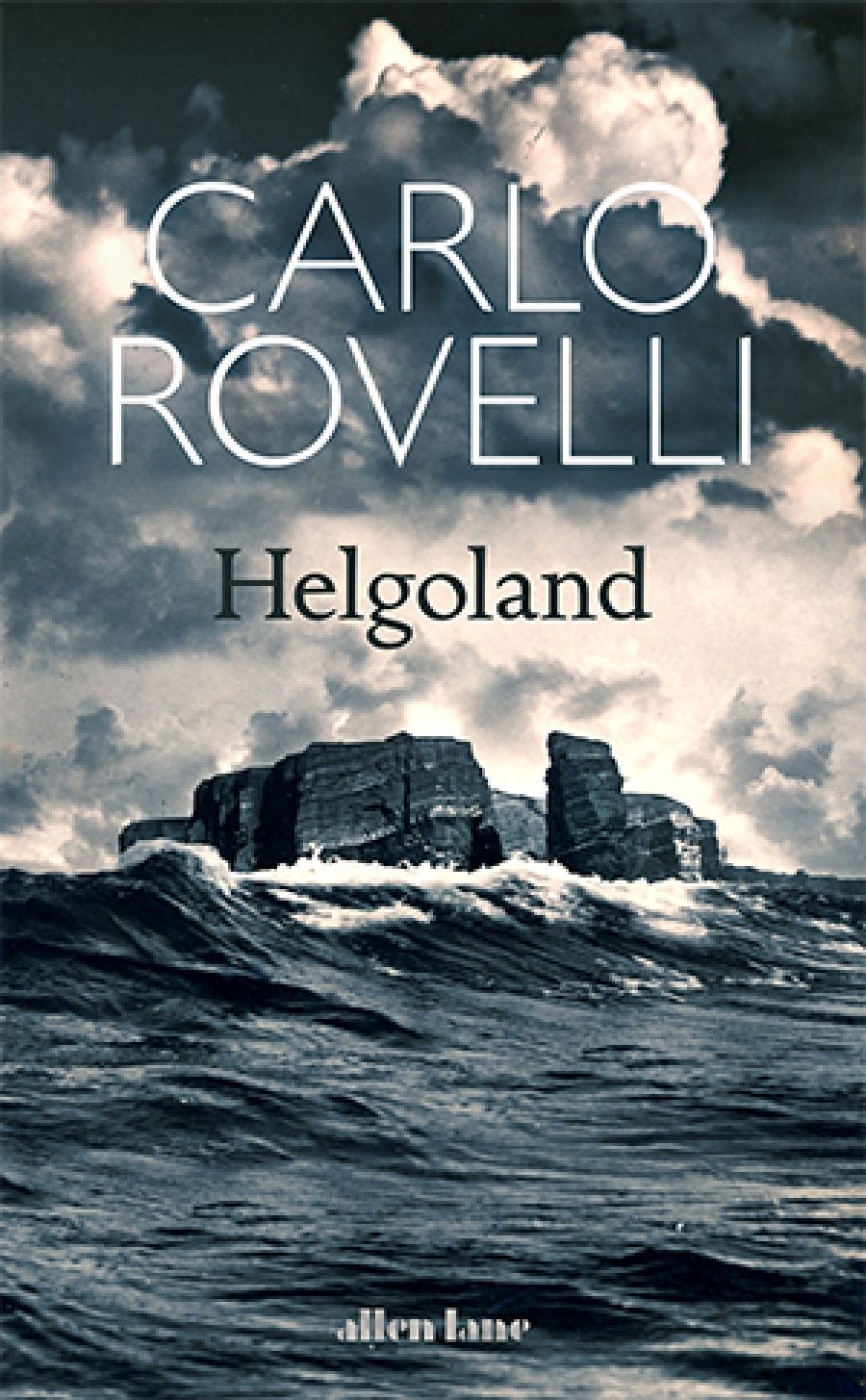
- Free Article: No
- Contents Category: Science and Technology
- Review Article: Yes
- Article Title: Psychedelic physics
- Article Subtitle: The alternative otherness of quanta
- Online Only: No
- Custom Highlight Text:
Theoretical physicist Carlo Rovelli has a gift for writing short, conversational, popular physics books. His earlier works, notably Seven Brief Lessons in Physics (2015) and The Order of Time (2018), have been bestsellers, and Helgoland is continuing the trend.
- Featured Image (400px * 250px):

- Alt Tag (Featured Image): Robyn Arianrhod reviews 'Helgoland' by Carlo Rovelli, translated by Erica Segre and Simon Carnell
- Book 1 Title: Helgoland
- Book 1 Biblio: Penguin, $39.99 hb, 196 pp
- Book 1 Readings Link: booktopia.kh4ffx.net/qn2WEq
The only problem with all this is what QM actually means. Is Schrödinger’s cat alive or dead? Or as Albert Einstein asked incredulously, is the moon really only there when you look at it? The bizarreness of QM is that quanta act randomly. This confounds our everyday experience where objects have an independent existence, which can be precisely tracked, both intuitively and according to the classical laws of motion. But Heisenberg’s ‘Uncertainty Principle’ put limits on the very possibility of accurately pinning down quantum events. And Max Born showed that Schrödinger’s equation – the quantum ‘equation of motion’ – could offer no precise Newtonian-style trajectory for a moving particle, but only the chances it will show up at a given place and time. What’s more, says Rovelli, ‘it seems that you only need to observe for what is happening to change!’
This ‘vertiginous’ shift in our view of reality is ‘almost psychedelic’. Rovelli has a hippie past. He also points out the role that 1960s counterculture played in revitalising academic interest in the ‘alternative otherness of quanta’. (Bestsellers such as physicist Fritjof Capra’s Tao of Physics (1975) were offspring of this interest.)
Helgoland is a sketch rather than a detailed popular introduction to quantum theory: rather than explaining QM, Rovelli attempts to ‘explain why it is so difficult to understand’. Physicists, too, find it difficult. In the 1920s and 1930s, two legendary pioneers of pre-QM quantum theory, Einstein and Niels Bohr, tussled long and hard over QM’s chanciness. To highlight the nub of their debate, Schrödinger proposed his cat paradox. The cat is in a sealed box with a radioactive atom whose decay will kill the cat, or in Rovelli’s kinder version simply send it to sleep. The radioactive decay of a single atom can happen at any random time, so based on data from many such atoms, QM gives the probabilities of this atom decaying or not within a certain time. Observations in the lab have shown that two such possibilities somehow interact, producing tangible ‘interference’ effects. This means that to an observer outside the box, the cat’s ‘quantum state’ – its apparent reality – is a mix of both ‘asleep’ and ‘awake’ at the same time. Yet when the observer looks inside the box, the cat is either asleep or awake. Understanding the transition from random quanta to definite everyday-world observation is a key mystery of QM. That was Schrödinger’s point.
Rovelli outlines the three main current interpretations of QM, including the Many Worlds view that ‘resolves’ the cat paradox by saying that if you observe the cat asleep, there is a parallel universe in which you observe it awake. Rovelli critiques each of these interpretations and offers his own: ‘Relational Quantum Mechanics’ (RQM).
Rovelli proposed RQM in the academic literature in 1996, although it is still controversial. As he presents it in Helgoland, however, it is extremely attractive. He is a huge fan of Einstein’s theory of relativity, and has adapted the approach by suggesting that not just time and space but all the properties of all objects are relative. Reality is only meaningful – indeed, only exists – in relation to its context. To resolve the cat paradox, then, he argues that relative to the cat, it is definitely asleep or awake at any time, while relative to an outside observer it is neither asleep nor awake until the box is opened. There is no paradox: both statements are true. There is no all-seeing observer judging what is real.
The traditional assumption of an objective outside observer dogged early pioneers of quantum theory, and led to popular misconceptions about the role we play in influencing reality. Still, in the 1960s, real and imagined similarities between QM and Eastern teachings offered an antidote to perceived Western rigidity.
Today, we recognise that all indigenous cultures contain significant insights. For instance, Wiradjuri man and geographer Associate Professor Michael-Shawn Fletcher told Cosmos magazine (Winter 2021), ‘There’s no imagining of the landscape or Country without people’; people and land are inseparably connected in a timeless web. He is speaking about a traditional philosophy of caring for Country, but it also resonates with QM’s view that we can never observe nature from outside it.
Rovelli himself looks to Eastern philosophy, comparing QM and the second-century Buddhism of Nāgārjuna. Both agree that nothing ‘exists in itself, independently from something else’, and Rovelli is struck by the similarity. Unlike more mystical quantum popularisers, though, he stays within the scientific paradigm: the observer and the observed are inseparably intertwined, but the real magic of QM is not that it explains or licenses our subjectivity: rather, it ‘changes the terms of our questions’.
In exploring these questions, Helgoland ranges across physics, semantics, information theory, and mathematics. It even digresses into neuroscience, literature, and philosophy, including Vladimir Lenin’s materialism. Rovelli assumes some knowledge and effort from his readers, but he repays it with an absorbing ‘meditation’ (his word) on a century of quantum-inspired debate, rethinking the profound mystery of reality.


Comments powered by CComment